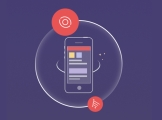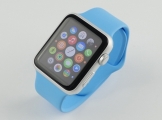|
我正在开发一个需要持续运行和跟踪一些外围特征的应用程序。
在前台一切正常。
它也可以在后台运行,但我不确定我是否正确。
我发了很多关于状态恢复和实现 willRestoreState 的帖子,但其中很多都没有明确告诉你当这个方法被调用时该怎么做。
我正在做的过程是这样的:
我正在使用 创建一个中央管理器
myCentralManager =
[[CBCentralManager alloc] initWithDelegate:self queue:nil
options { CBCentralManagerOptionRestoreIdentifierKey:
@"myCentralManagerIdentifier" }]; { CBCentralManagerOptionRestoreIdentifierKey:
@"myCentralManagerIdentifier" }];
从这里开始,我正在执行以下常规流程:
等待中央管理器开机(centralManagerDidUpdateState) -> 扫描我的外围设备 -> 连接到它 -> 发现服务 -> 发现特征 -> 订阅特征 -> 读取数据
然后我杀死我的应用程序使用
kill(getpid(), SIGKILL);
我正在等待几秒钟,然后再次从我的外围设备开始做广告。
然后我可以看到进程恢复了生命,并且我的日志显示 AppDelegate 中的 didFinishLaunchingWithOptions 被调用。
然后我像这样恢复中央管理器:
NSArray *identifiers = launchOptions[UIApplicationLaunchOptionsBluetoothCentralsKey];
if (identifiers && identifiers.count > 0) {
_centralManager = [[CBCentralManager alloc] initWithDelegate:self
queue:nil
options {CBCentralManagerOptionRestoreIdentifierKey:[identifiers objectAtIndex:0]}];
} {CBCentralManagerOptionRestoreIdentifierKey:[identifiers objectAtIndex:0]}];
}
我还可以看到 willRestoreState 和 centralManagerDidUpdateState 正在被调用。
这就是我迷路的地方。
接下来我该怎么办?如果我继续进行常规流程(我在上面描述过,所有似乎都可以正常工作 - 并且以与上述相同的方式。
但是 - 我做对了吗?
我应该在 willRestoreState 中做些什么吗?
如果是,我应该怎么做?
提前致谢!
Best Answer-推荐答案
基本上,您将返回已连接的外围设备 - 您应该保存对它的引用并将自己设置为它的委托(delegate)。这是我的代码,非常简单:
- (void)centralManager CBCentralManager *)central willRestoreState CBCentralManager *)central willRestoreState NSDictionary<NSString *,id> *)dict
{
//get the handle to the peripheral already connected by the os and set ourselves as the delegate
NSArray *peripherals = dict[CBCentralManagerRestoredStatePeripheralsKey];
if (peripherals.count > 0){
CBPeripheral* pr = peripherals[0];
// Set peripheral required values and start discovering services
[pr setDelegate:self];
[pr readRSSI];
[pr discoverServices:nil];
}
} NSDictionary<NSString *,id> *)dict
{
//get the handle to the peripheral already connected by the os and set ourselves as the delegate
NSArray *peripherals = dict[CBCentralManagerRestoredStatePeripheralsKey];
if (peripherals.count > 0){
CBPeripheral* pr = peripherals[0];
// Set peripheral required values and start discovering services
[pr setDelegate:self];
[pr readRSSI];
[pr discoverServices:nil];
}
}
关于ios - CoreBluetooth "willRestoreState"- 究竟应该在那里做什么?,我们在Stack Overflow上找到一个类似的问题:
https://stackoverflow.com/questions/37796780/
|  客服电话
客服电话
 APP下载
APP下载

 官方微信
官方微信
















 { CBCentralManagerOptionRestoreIdentifierKey:
@"myCentralManagerIdentifier" }];
{ CBCentralManagerOptionRestoreIdentifierKey:
@"myCentralManagerIdentifier" }];
 CBCentralManager *)central willRestoreState
CBCentralManager *)central willRestoreState
